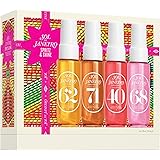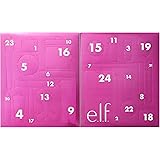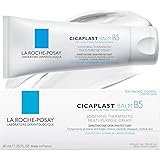The exhilarating rush of a new acquisition, particularly in the world of fragrances, can be incredibly tempting. We often see a captivating bottle online or hear glowing reviews, prompting us to make an impulsive purchase. However, as the video above humorously illustrates, the reality of a “blind buy” often falls short of our fragrant fantasies, sometimes leaving us with a rather peculiar “smoky nut smelling fragrance” and a significant financial dent, like the mentioned $200 investment.
Many fragrance enthusiasts share this relatable experience, desperately trying to convince themselves that a new, expensive scent is indeed “good.” This shared predicament highlights a fundamental challenge within the fragrance community: how to navigate the risks of purchasing a fragrance without prior testing. Understanding the psychology behind these decisions, and implementing smarter strategies, can transform your fragrance journey from a series of hopeful gambles into a collection of cherished discoveries.
The Allure and Peril of Blind Buying Fragrances
Blind buying fragrances involves purchasing a scent without ever smelling it, relying instead on online descriptions, community reviews, or the allure of the bottle itself. This practice is akin to buying a car based solely on its color and engine specifications without a test drive; the risks are considerable, and the potential for disappointment looms large. The thrill of anticipation often overshadows the practical need for personal evaluation, leading many down a financially regrettable path.
The market is flooded with thousands of unique fragrance options, ranging from accessible designer brands to exclusive niche perfumes. Each promises an unparalleled olfactory experience, making the decision-making process incredibly complex. Without the opportunity to test these scents on your own skin, you’re essentially gambling your money on a scent profile that might not align with your personal preferences or body chemistry, which is a crucial aspect of fragrance wear.
Understanding the Psychology of Blind Buys
The compulsion to blind buy often stems from a combination of factors, including fear of missing out (FOMO) on limited editions, the desire for instant gratification, or simply being swayed by persuasive marketing. We project our hopes onto these untested bottles, imagining the perfect aroma that will complete our collection or enhance our personal style. This mental pre-framing makes it incredibly difficult to objectively evaluate a fragrance once it arrives, especially after a significant investment.
Furthermore, once we commit financially, a phenomenon known as cognitive dissonance often kicks in. This psychological discomfort arises when we hold conflicting beliefs, such as “I bought an expensive fragrance” and “I don’t actually like this expensive fragrance.” To resolve this internal conflict, we subconsciously try to justify the purchase, convincing ourselves that the “smoky nut smelling fragrance” is indeed good, simply because we cannot bear the thought of wasting $200.
The Financial Sting of a Bad Fragrance Investment
A $200 misstep in fragrance can feel like a significant financial setback, especially when it’s a scent you genuinely dislike. This amount could instead fund several smaller, carefully chosen decants or even a full bottle of a tried-and-tested favorite. The cumulative effect of multiple bad blind buys can deplete a budget quickly, leaving you with a collection of unused or rarely-worn bottles rather than a curated selection you adore.
Consider the opportunity cost: that $200 could have gone towards an experience, a different hobby, or even contributed to a savings goal. Instead, it sits as a monument to a regrettable decision. This financial impact underscores the importance of a more strategic approach to fragrance acquisition, moving away from impulsive gestures towards informed and deliberate choices that truly bring value to your collection.
Navigating the Scent Spectrum: Decoding Fragrance Notes
The description “smoky nut smelling fragrance” provides a glimpse into the complexity of scent profiles, yet it barely scratches the surface. Fragrances are intricate compositions built from various notes, typically categorized into top, middle (heart), and base notes. These layers evolve over time, creating a dynamic olfactory experience that can be vastly different from the initial spray to the dry-down.
Mastering Scent Descriptions and Notes
Top notes are the first impression, light and fleeting, like citrus or fresh herbs. Middle notes emerge after the top notes fade, forming the core of the fragrance, often floral or spicy. Base notes are the foundation, rich and long-lasting, including ingredients like woods, resins, musk, or gourmand elements. Understanding these building blocks is like learning a new language, allowing you to interpret fragrance descriptions with greater accuracy and predict how a scent might evolve on your skin.
However, even with this knowledge, scent perception is highly subjective; one person’s “smoky nut” could be another’s “warm, comforting woodsy accord.” Analogies can help clarify: imagine a symphony, where individual instruments are notes, and their combined harmony is the overall scent. Just as you wouldn’t buy a symphony album without hearing it, a deeper understanding of individual notes helps predict the overall composition, but isn’t a substitute for experiencing it.
Smart Strategies to Avoid Fragrance Buyer’s Remorse
Moving beyond the impulse and into informed decision-making requires a shift in mindset and methodology. Instead of viewing fragrance buying as a lottery, consider it an investment in your personal enjoyment and style. Implementing several key strategies can significantly reduce the risk of buyer’s remorse and lead to a more satisfying fragrance collection.
The Indispensable Role of Samples and Decants
The most crucial step to avoiding a regrettable blind buy is to sample a fragrance before committing to a full bottle. Samples are small vials (typically 1-2 ml) provided by brands or retailers, while decants are larger portions (5-10 ml) meticulously transferred from original bottles by reputable third-party sellers. These smaller sizes offer an affordable way to live with a scent for several days, testing it in different environments and temperatures.
Trying a fragrance multiple times allows you to experience its full development, from the initial spray to the lingering dry-down, on your unique skin chemistry. This process is akin to taking a car for an extended weekend test drive, where you can assess its performance under various conditions. Decants, in particular, provide enough juice to form a comprehensive opinion, ensuring you truly love a fragrance before making a substantial investment.
Leveraging Reviews and Community Insights
While personal experience reigns supreme, the collective wisdom of the fragrance community offers invaluable guidance. Websites like Fragrantica or Basenotes host extensive databases of fragrances with user reviews, note breakdowns, and comparisons. Reading diverse opinions can provide a balanced perspective, highlighting both the universally loved aspects and the potentially polarizing facets of a scent.
However, approach these reviews with a critical eye. Remember that individual preferences vary wildly; what one person describes as a “masterpiece” could be another’s “headache-inducing” scent. Think of reviews as directions on a map: they point you towards interesting destinations, but you still need to explore the terrain yourself to see if it suits your journey. Seek out reviewers whose tastes align with yours for more reliable insights.
Testing on Skin: The Ultimate Litmus Test
The way a fragrance interacts with your skin is profoundly personal and often unpredictable. A scent that smells divine on a test strip or a friend’s wrist might transform into something entirely different when it touches your unique body chemistry. Factors like skin pH, diet, medication, and even natural oils can alter a fragrance’s projection, longevity, and overall aroma.
This biological interaction means that a fragrance truly isn’t “yours” until it has spent time on your skin. It is like trying on a bespoke suit: it may look great on the hanger, but only by wearing it can you truly understand its fit, comfort, and how it moves with you. Always reserve final judgment until you have worn a fragrance for at least an hour or two, allowing all the notes to unfold and meld with your natural scent.











